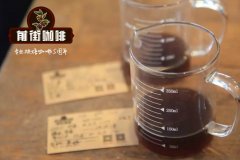Yemeni mocha, the world's only full-time coffee producer, game mocha, Yemen mocha.

Professional coffee knowledge exchange more coffee bean information please follow the coffee workshop (Wechat official account cafe_style)
Yemeni mocha coffee
Yemen is bordered by the Arabian Sea to the south, with a coastline of 1906 km, Oman to the east and Saudi Arabia to the north.
The border is 1746 km long (288km with Oman and 1458 km with Saudi Arabia).
Yemen is mainly mountainous plateau, multi-desert and semi-desert, Hadur Shuaib peak (3760 meters above sea level) is the highest peak in the country.
The western coastal zone is similar to Han Zhi, both hot and humid; the western mountainous area is more suitable for human habitation; and the eastern part belongs to the extremely arid desolate desert zone.
The history of Yemen
Yemen is famous for its frankincense or spice trade
It is the origin of the earliest coffee mocha in the world.
Yemen, which retained its way of life thousands of years ago.
Ethiopia, across the sea from Yemen, also sells coffee through the port of Mocha.
Therefore, Ethiopian sun-treated coffee is often called mocha.
The Yemeni mocha is the ancestor of the world coffee trade.
Thanks to the promotion of delicious coffee to Yemen all over the world
It's called Arabica coffee (Arabia).
Mocha Coffee
The name mocha coffee comes from Mocha in Yemen, and the port can no longer be used.
It has almost been filled with sand, no longer a port, but a sandbar.
As a kind of individual coffee, Yemeni mocha has a unique charm and a long history.
Although Ethiopia was the first country in the world to discover coffee
But the first country in the world to mass-produce coffee as a crop was Yemen.
At the beginning of the 17th century, the first Yemeni coffee was exported to Europe through the ancient port of Mocha.
It amazed Europeans because all exported coffee sacks had to be marked with MOCHA.
To prove that it was transported from the port of Mocha, so the Europeans brought it here.
Delicious coffee is called "mocha coffee"
Matali.
Yemeni coffee grows on steep terrain with little rainfall, poor land and insufficient sunlight, which is unique and difficult for coffee growth conditions.
But gave birth to the Yemeni mocha, which can not be replaced by the coffee world, and the main producing area of coffee is Sanani.
Matari, Ismaili. Matali production area is located in the highlands to the west of the capital, at an altitude of 2000,000m above sea level.
Ancient method of sun treatment
Yemen is a classic of the ancient morning taste of the sun, and it is also the only country in the world that produces full-time coffee.
Europe's fascination with game mocha has not changed since the 17th century. This is related to the dry climate, and coffee is mainly grown in the central highlands.
The average annual rainfall is only 400 Mel 750 mm, much lower than Arabica's best rainfall of 1500 Mel 2000 mm.
Due to the lack of water environment, farmers are still unable to introduce more advanced washing methods, wild flavor is better than Hara coffee, so Yemen has become the choice to experience the taste of the sun.
Mocha beans are smaller, rounder and light green than most coffee beans, which makes mocha beans look more like peas.
The shape of mocha coffee beans is similar to Ethiopia's Harald coffee beans, with small particles and high acidity.
With a strange and indescribable spicy taste. If you taste it carefully, you can tell the taste of chocolate.
So the attempt to add chocolate to coffee is a natural process of development.
Mocha coffee is characterized by its fruity aroma, with obvious wine, spicy and nutty flavors.
Some people say that the Yemeni mocha tastes like blueberries, while others say it is the "wild flavor" peculiar to the Red Sea.
The price of Yemeni coffee in the international market has not been low, mainly because Yemeni coffee is very popular in countries and regions where "Turkish" coffee is popular.
In Saudi Arabia, the Yemeni mocha is so spoiled that people there are willing to pay a high price for low-quality mocha coffee.
This special fondness for mocha keeps the price of mocha coffee high in the world coffee market.
Country: Yemen
Production area: Bani Matar
Altitude: 2000-2400 m
Treatment: insolation
Variety: Matali
Flavor description: taste full and thick, woody, wine, juice, berries, dried fruit, dried longan and tobacco, smoky finish
END
Important Notice :
前街咖啡 FrontStreet Coffee has moved to new addredd:
FrontStreet Coffee Address: 315,Donghua East Road,GuangZhou
Tel:020 38364473
- Prev

What are the characteristics of Guatemalan coffee?
Guatemalan coffee is produced in the Republic of Guatemala (The Republic of Guatemala) in northwestern Central America. The country's mountain forest area accounts for 2/3 of the country's area, rich in high-quality coffee beans, its strong sour taste, mellow taste and slightly wild, can be used as a single drink or for the blending of comprehensive coffee Guatemalan coffee taste: bitter and fragrant, good taste. Highland
- Next

What are the characteristics of Brazilian coffee? Introduction of High quality Coffee production area Mandy Kaila Mine in Brazil
Professional coffee knowledge exchange more coffee bean information Please pay attention to coffee workshop (Wechat official account cafe_style) Coffee was first introduced to Brazil in the early 18th century. In 1727 the Brazilian government sent a personable army officer to secretly bring coffee seeds from French Gaiana to Brazil on the grounds of mediating border disputes. It is said that the wife of French Gaiana was deep at that time.
Related
- Detailed explanation of Jadeite planting Land in Panamanian Jadeite Manor introduction to the grading system of Jadeite competitive bidding, Red bid, Green bid and Rose Summer
- Story of Coffee planting in Brenka region of Costa Rica Stonehenge Manor anaerobic heavy honey treatment of flavor mouth
- What's on the barrel of Blue Mountain Coffee beans?
- Can American coffee also pull flowers? How to use hot American style to pull out a good-looking pattern?
- Can you make a cold extract with coffee beans? What is the right proportion for cold-extracted coffee formula?
- Indonesian PWN Gold Mandrine Coffee Origin Features Flavor How to Chong? Mandolin coffee is American.
- A brief introduction to the flavor characteristics of Brazilian yellow bourbon coffee beans
- What is the effect of different water quality on the flavor of cold-extracted coffee? What kind of water is best for brewing coffee?
- Why do you think of Rose Summer whenever you mention Panamanian coffee?
- Introduction to the characteristics of authentic blue mountain coffee bean producing areas? What is the CIB Coffee Authority in Jamaica?

